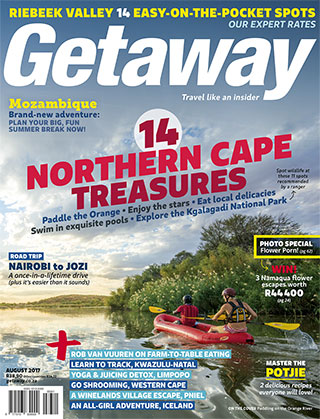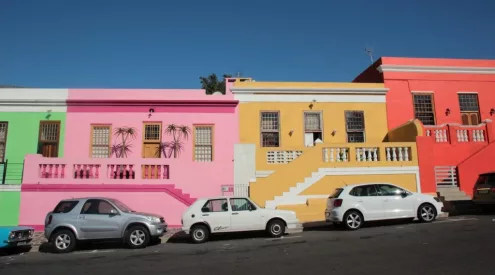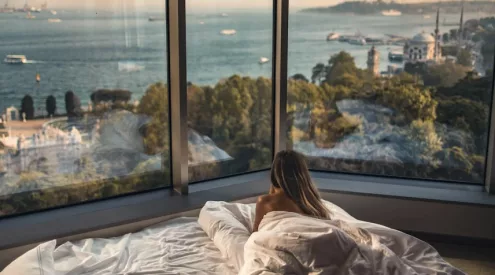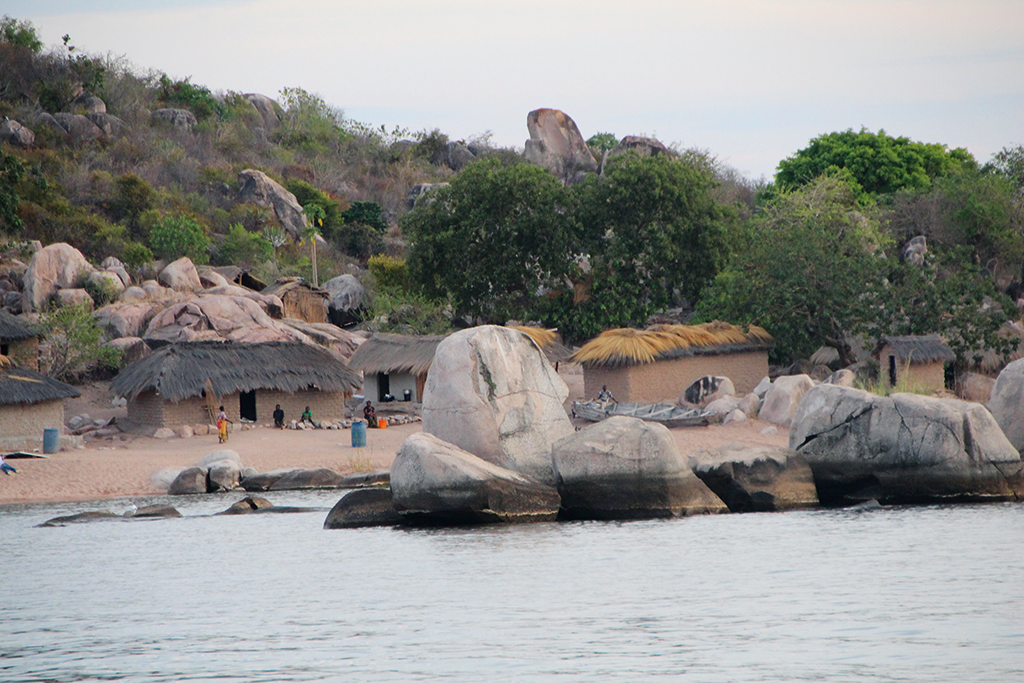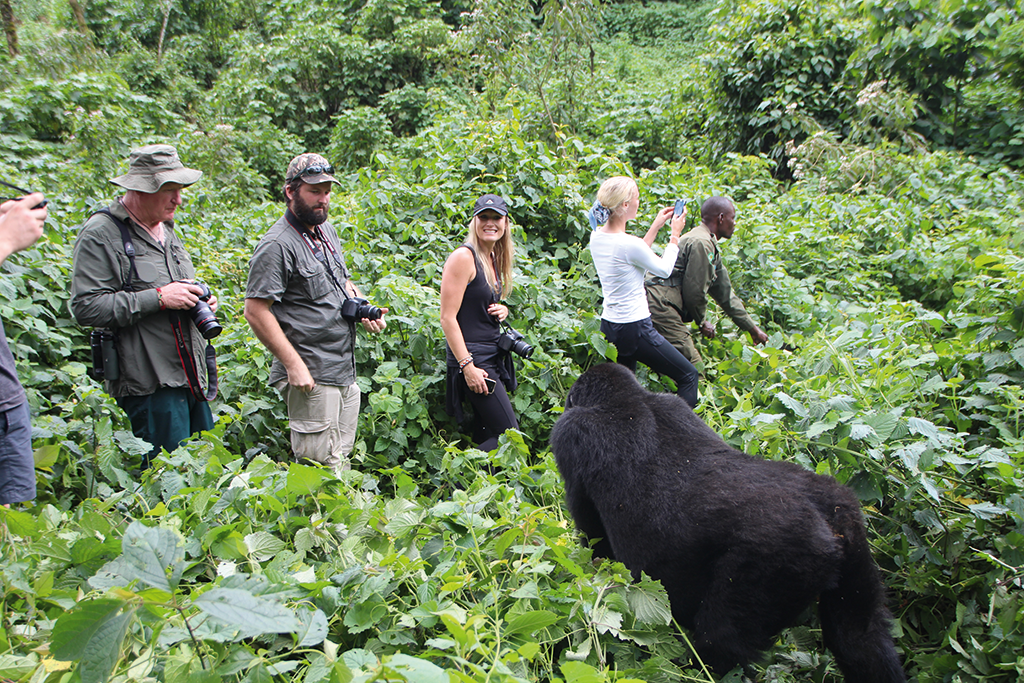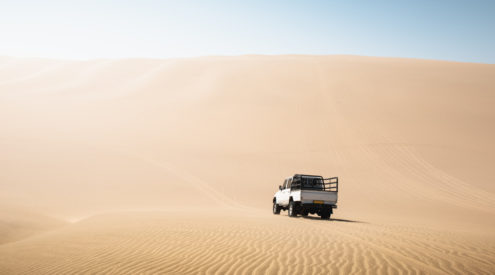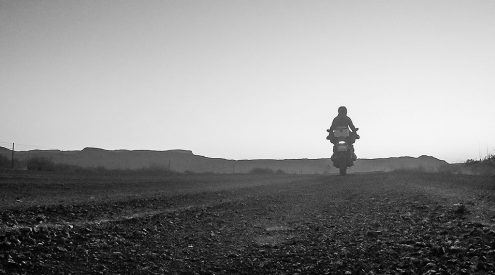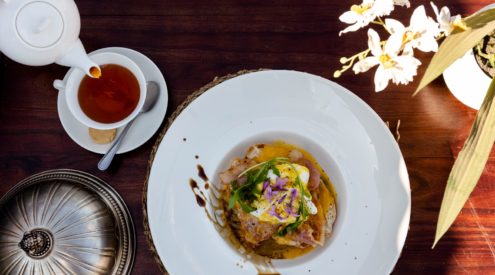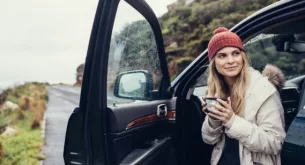Carla Geyser spent 100 days on the road, travelling from Durban to Nairobi with an all-female team of conservationists to connect the forces of protecting Africa’s wildlife. This is how she got home.
A friend who recently lost his dog told me that he doesn’t know how rangers, conservationists and eco-warriors can face the tragedies of poaching on a daily basis. To me, it’s simple: we don’t have a choice. We can’t rely on future generations to save our wildlife. It has to be us.
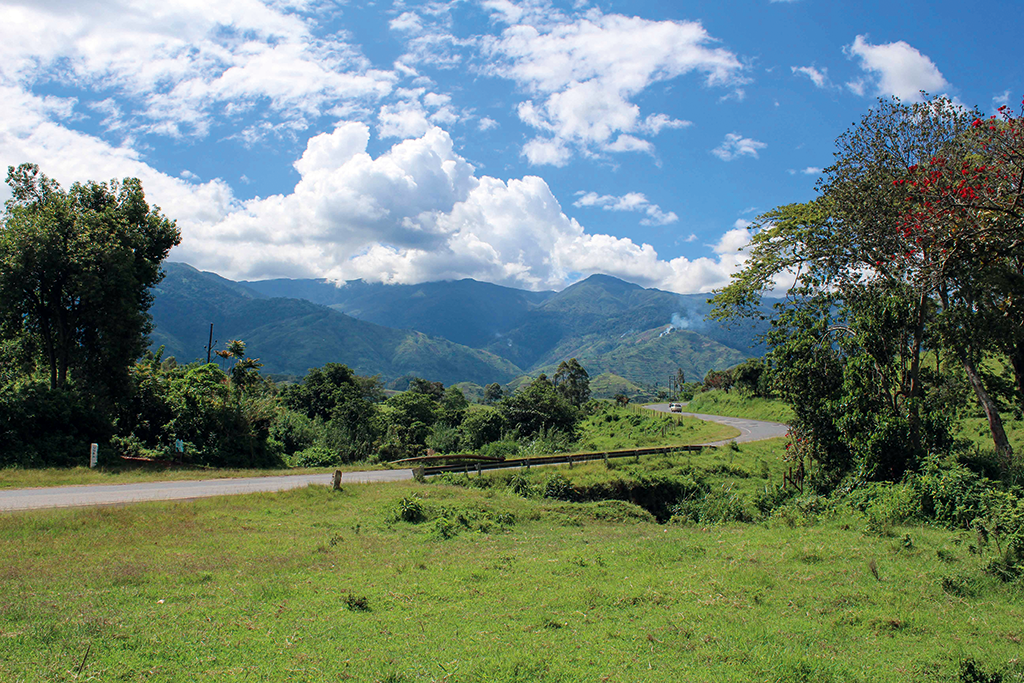
On the road to Queen Elizabeth National Park in Uganda. There are short detours enroute to Lake Mburo, the Rwenzori Mountains and Kibale Forest National Park, renowned for chimpanzee tracking if you have extra time. Photo by Carla Geyser.
It was this thought that led me to assemble 13 women for an expedition into Southern Africa at the end of 2016 to do whatever we could to help end the illegal killing of our elephants. Our Elephant Ignite Expedition covered close to 16000 kilometres, travelling from Durban to Nairobi through Swaziland, Mozambique, Zimbabwe, Botswana, Namibia, Zambia, Malawi and Tanzania in three vehicles.
Named Courage, Hope and Love, our 4X4s took us from the vastness of the Serengeti to the intimacy of Malawi and everywhere in between. We met some of the continent’s top conservationists and did everything we could (see highlights on opposite page) to help protect our continent’s greatest treasures.
One hundred days later we were in Nairobi and it was time to go home. The rest of the group flew back, some friends of mine flew in, and after the reshuffle the final homeward-bound team tally stood at six people. We were keen to get to Joburg but at the same time didn’t want to miss the opportunity to explore parts of this beautiful continent that would be a shame to miss. Life’s about the journey, right?
So I plotted a route that would get us home in about two weeks. Soon we were heading out of Nairobi, ready to tackle the road to Uganda. Gridlock traffic, it turned out, was the first hurdle. Through exhaust fumes, hooters and hurried taxis we ploughed until the road northwest opened up and took us past beautiful rolling hills and the freshwater lakes created by Africa’s Great Rift.

The Nairobi skyline – above the cacophony of chaos in the streets. Photo by Tyson Jopson.
We passed Lake Naivasha and Lake Nakuru and continued on to Eldoret where we were welcomed with big hellos and smiles. That night we fell asleep to the sound of the Naiberi River rushing by.
The next day we made a break for the Malaba border post and kept our bonnets pointed west, in the direction of Africa’s most iconic river: the Nile. More specifically, the Victoria Nile, which flows north from Lake Victoria, widely considered the source of this fabled waterway.
Explorers River Camp was our base for two nights. We spent the first afternoon on a boat cruise, binoculars trained on the heavens and ears peeled for the ‘sound of Africa’. This is, after all, fish eagle country. The next day, armed with an adventurous spirit and a sense of humour in the face of danger, we hit the rapids on a rafting adventure.
From Explorers, we negotiated the thriving metropolis of Kampala and crossed the equator not long after at Kayabwe. Magnificent green and lush vegetation coloured our journey through Kibale Forest (home to chimpanzees) and down to Queen Elizabeth National Park, home to the unique tree-climbing lions of Ishasha.
We didn’t see them, but we saw plenty of other wildlife on an afternoon boat ride: the 32-kilometre Kazinga Channel connects Lake George to Lake Edward and, aside from those beautiful fish eagles, we spotted pied kingfishers, hippos, Cape buffalo, Nile monitor lizards and witnessed yet another one of Mama Africa’s magnificent sunsets.

DAy’s end at Explorers River Camp on the Nile River near Jinja, Uganda. Photo by Carla Geyser.
From there we drove beneath the green mountains of the Virunga range and through the tropical forests of Kigezi Game Reserve, and then headed south for Bwindi Impenetrable Forest, the home of gorilla trekking in Uganda. It was, without a doubt, the highlight of our trip back. Our guide, David Agenya, led us through thick vegetation and along slippery paths until we eventually encountered the Rusheguru mountain gorilla family. Every step of that 16-kilometre trek was worth it once we looked into their soft brown eyes.
All too soon we were back on the road to the Gatuna border post into Rwanda. Our vehicles were searched extensively and all plastic packets – even the small ones – confiscated (they take their plastic ban seriously). There was also a quick lesson in driving on the right (or is it the ‘wrong’?) side of the road as we drove to the Kigali Genocide Memorial.
It’s a heartbreaking experience and truly brings home the devastation of what happened here in 1994. Sombre, we headed out of the city to the Urugo Women’s Opportunity Center. It’s part of a social enterprise that promotes economic empowerment and was created in collaboration with Women for Women International, which helps female survivors of war rebuild their lives. We stayed there that night and got to hear about some of the inspiring women making real changes to the lives of others.

A gorilla in Bwindi Impenetrable Forest gets a closer look at Shannon – it took four hours of hiking with David Agenya (pictured with a Danish tourist) to see the Rusheguru family group. Photo by Carla Geyser.
After chapatis and coffee the following morning, we headed for Rusumu Falls and the Tanzanian border. A slow crossing followed by a potholed road to Nyakanazi and a dirt road to Kibondo meant our original plan to make it to Kigoma in a day was scuppered, and we checked in at the very ‘interesting’ Cheyo Hotel in Kibondo. Thanks to the resident rooster, we got an early start. Having reached Kigoma in good time, we could spend the afternoon swimming in Lake Tanganyika, at Jakobsen Beach and Guesthouse, followed by sundowners as the fishing boats came in.
Next day, it was a long, rough and bumpy drive south over rocky terrain, through forests, across savanna and lush flood plains. Finally we ended up at Lake Shore Lodge in Kipili after nine hours of driving. There was just enough time for drinks and sunset over the lake before we tucked into a scrumptious dinner on the beach. That night we sat on the sand and let the waves lap gently at our feet. Candles flickered in the darkness, a bonfire roared behind us and a sky filled with a million stars hung like a black canvas above.

Lake Shore Lodge’s sunset cruise boat, Lake Wanderer, passes Mvuna – one of the several islands on Lake Tanganyika. Photo by Carla Geyser.
The relaxing evening gave way to a less-than-relaxing day. We’d planned to cross into Zambia at Mpulungu and make it to Lusaka in one day. Another slow crossing and a broken shock and stabiliser link dashed those hopes in Kasama, and we had to stay overnight before continuing the long journey south to Zambia’s bustling capital.
Then, in (relatively) no time, we found ourselves on the banks of the Zambezi. We stopped for lunch in Livingstone and, bellies full, took the famous crossing into Botswana on the Kazangula Ferry, a comedy of errors that somehow always seems to work out.
We spent that night at Senyati Safari Camp and took the straight route south to Francistown the next day. Along the way we stopped at Elephant Sands and watched those gentle beasts slurp from a waterhole a stone’s throw away.
Seeing these animals there, for the last time before entering South Africa, brought the whole project home. I’d been on the road for 117 days and covered almost 20000 kilometres. It was both exhausting and invigorating, but always an adventure. It reinforced my belief that everybody should explore other countries in Africa at least once. It will change your life and with it, the lives of Africa’s greatest treasures.
Getting from Nairobi to Jozi
Days 1 to 4: Nairobi, Kenya, to Queen Elizabeth National Park, Uganda
Day 1: 328 kilometres (Nairobi – Eldoret), Day 2: 296 kilometres (Eldoret – Jinja), Day 3: 0 kilometres (rest), Day 4: 482 kilometres (Jinja – QEP).

Camping on the Nile at Explorers. These versatile vehicles are from Avis Safari Rental, which was a sponsor for the trip. Photo by Carla Geyser.
Take the A104 out of Nairobi (leave before 05.30 or after 09.00 to beat traffic) to Eldoret and Naiberi River Campsite (1), about 16 kilometres out of town. Take the A104 to get to Malaba border post. Follow the A109 to Jinja. Nile River Explorers Club (2), is eight kilometres out of town on Lake Bujagali. Take the A109 to Kampala and then head west through Kibale Forest National Park and south at Fort Portal on the A109 to Kasese. Cross the Kazinga Channel and look out for signs to The Bush Lodge (3).
Days 5 to 9: Queen Elizabeth National Park, Uganda, to Lake Tanganyika, Tanzania
Day 5: 131 kilometres (QEP – Bwindi), Day 6: 0 kilometres (rest), Day 7: 284 kilometres (Buhoma Village – Kayonza), Day 8: 294 kilometres (Kayonza – Kibondo), Day 9: 248 kilometres (Kibondo – Kigoma).

Your journey will take you through one of the cleanest capital cities in Africa, Rwanda’s Kigali.

Take the Mbarara–Kasese road out of QEP and continue south on the Ntungamo–Katunguru road through Kigezi Game Reserve, past the Kayonza Growers Tea Factory to Kanyatorogo and then Buhoma (4) in Bwindi Impenetrable Forest. From there get onto the Kabale–Kisoro road to Kabale for the Gatuna border post. Take the RN3 to Kigali and then east (staying on the RN3) to Urugo Women’s Opportunity Center (5). Continue on the RN3 to Rusoma Falls border post. Take the B3 to Muzani and Nyakanazi, then the B8 to Kibondo. We stayed at Cheya Hotel (6) but if you want to skip this stop (recommended) do the drive from Kigali to Kigoma in a day (allow 11 hours plus time at the border). Head south on the B8. Take the B381 after Kasulu to Jakobsen Beach and Guesthouse (7) on Lake Tanganyika.
Days 10 to 13: Kigomo, Tanzania, to Lusaka, Zambia
Day 10: 514 kilometres (Kigomo – Kipili), Day 11: 0 kilometres (rest), Day 12: 445 kilometres (Kipili – Kasama), Day 13: 888 kilometres (Kasama – Lusaka).
Take the B8 south through Katavi National Park, past Sitalike and then the road right to Kipili and Lake Shore Lodge (8) after Kisi. It’s a long drive and in retrospect we should have broken it up with an overnight stop at Riverside Camp in Sitalike (camping from R130 per person, riversidecampkatavi.weebly.com). From Kipili take the B8 south past Sumbawanga to the Mpulungu border (it’s a small operation; we had to go to the next village, Mbala, to get third-party Insurance). Then head via the M1 to Alitasha Lodge (9) in Kasama. Take the T2, passing Mpika and Kabwe, to the capital, Lusaka, and to Eureka Camping Park (10).
Days 14 to 16: Lusaka, Zambia, to Johannesburg, South Africa
Day 14: 556 kilometres (Lusaka – Kasane), Day 15: 486 kilometres (Kasane – Francistown), Day 16: 689 kilometres (Francistown – Joburg).

Head out of Lusaka on the T2 to Kafue and then onto the T1 after you cross the Kafue River. Follow the T1 to Livingstone. Take the ferry at Kazangula into Botswana and then the A33 south for about 20 kilometres until you see the turn-off to Senyati Safari Camp (11). Take the A33 to Nata and then the A3 to Francistown and Cresta Marang Gardens (12). From there head on the A1 past Palapye and then take the road east to the Martin’s Drift border post, where you’ll cross into South Africa. From here, the R510 to Lephalale, the R517 to Vaalwater and the R33 to Modimolle will get you on the N1 south to Pretoria and Johannesburg.
This is Africa, things can change fast. I recommend doing your own research too, before heading out on an epic journey like this.
The Nairobi to Jozi bucket list directory
1. Naiberi River Campsite and Resort, Eldoret, Kenya. Rustic and serene camp with a touch of modern luxury set in a pristine environment home to more than 250 bird species, from iconic bee-eaters to elusive turacos. Log cabins from R442 per person. Camping from R95 per person. naiberi.com
2. Explorers River Camp, Jinja, Uganda. This world-famous camp has fantastic views of the Nile River, a well-stocked bar and excellent meals. Boat cruises from R590 per person and white-water rafting from R2100 per person. Rooms from R390 per person. Camping from R90 per person. raftafrica.com
3. The Bush Lodge,Queen Elizabeth National Park, Uganda. Built on eco principles, the bandas are designed and spaced in such a way to maximise privacy and enhance that safari feeling. Rooms from R450 per person, B&B. naturelodges.biz/the-bush-lodge
4. Buhoma Community Rest Camp, Bwindi Impenetrable National Park, Uganda. This was our base for gorilla trekking. We got permits through Wild Frontiers (wildfrontiers.co.ug) in advance. They cost about R7800 per person and porters are about R260 per person (recommended). Or arrange your trek with David Agenya ([email protected]). He was our guide and very helpful. Cottages from R1080 per person full board. buhomacommunity.com
5. Urugo Women’s Opportunity Center, Kayonza, Rwanda. An eco-friendly spot to stay 70 kilometres outside of Kigali’s city centre. It uses harvested rainwater, composting toilets and water heated by solar panels. Rooms from R780 per person. Camping from R200 per person. urugowoc.org
6. Cheyo Hotel, Kibondo, Tanzania. If plastic tablecloths, quart beers, roosters, vegetable curry and the singer Shaggy are your thing, this is the place! If not, push through to Kigoma (recommended). Price on arrival. Find it on Facebook.
7. Jakobsen Beach and Guesthouse, Kigoma, Tanzania. Beautiful accommodation on a pristine beach. Swim, snorkel or just relax. Rooms from R300 per person. Camping from R120 per person. newsite.kigomabeach.com
8. Lake Shore Lodge, Kipili, Tanzania. Stylish accommodation on the banks of Lake Tanganyika. You can kayak (from R445 per person), scuba dive (R975 per person) and watch the sunset from a hammock. Dinners (R325 per person) are delicious and under the stars. Rooms from R780 per person.Camping from R180 per person. lakeshoretz.com
9. Alitasha Lodge, Kasama, Zambia. Not a planned stop but decent, clean and basic. Price on arrival. Find it on Facebook.
10. Eureka Camping Park,Lusaka, Zambia.Spacious grounds on a private game farm. Rooms from R400 per person. Camping from R200 per person. eurekacamp.com
11. Senyati Safari Camp,Lesoma Valley, Botswana. Great spot for those who want privacy (each site has its own ablutions). There are also self-catering chalets. Don’t miss the waterhole and underground viewing bunker. Chalets from R1460 (sleep four). Camping from R190 per person. senyatisafaricampbotswana.com
12. Cresta Marang Gardens, Francistown, Botswana. Charming hotel and clean, relaxed campsite on the banks of the Tati River. Rooms from R2140 for two B&B. Camping from R170 per person. crestahotels.com
Read the story in the August 2017 issue of Getaway magazine.
Our August issue features 14 Northern Cape treasures, a trip along Mozambique’s pristine beaches on a fat-bike, holidays to take if you want to learn a new skill and so much more.
